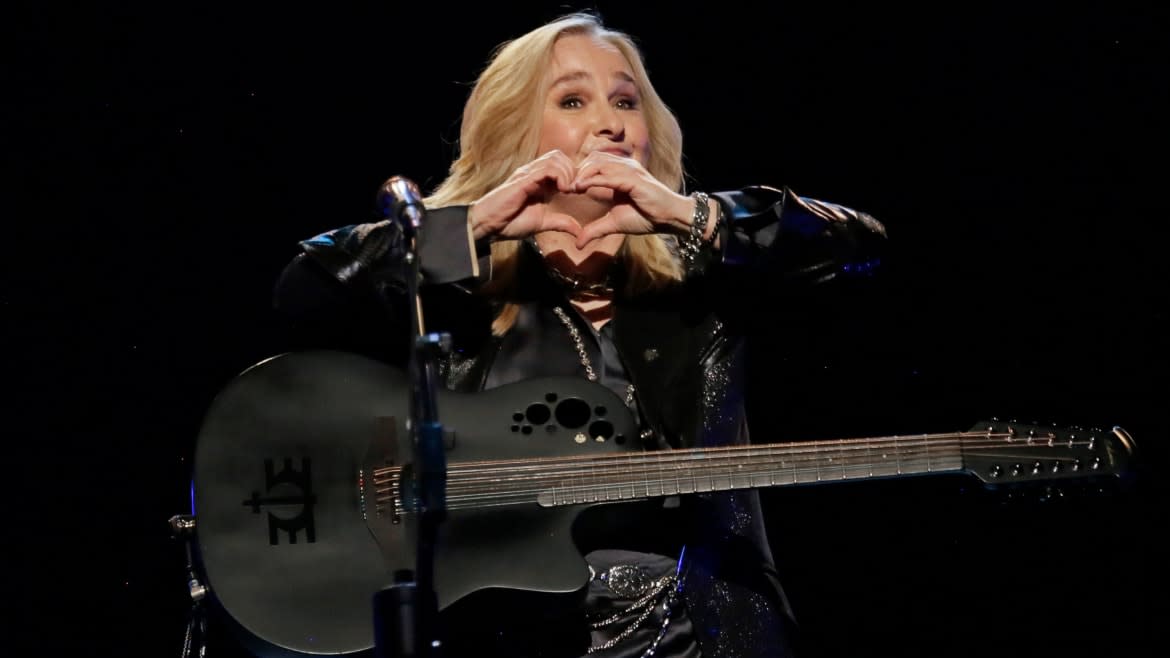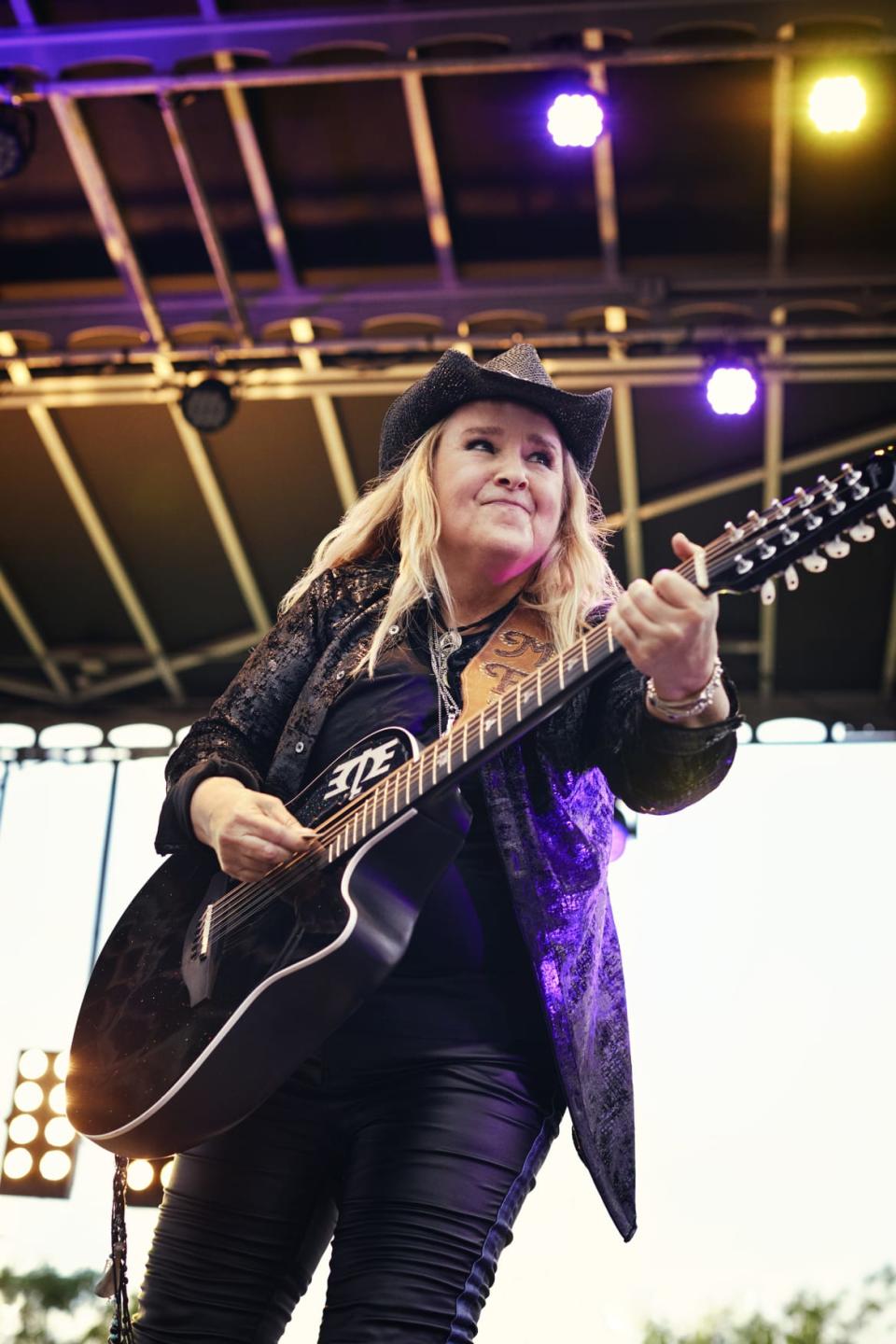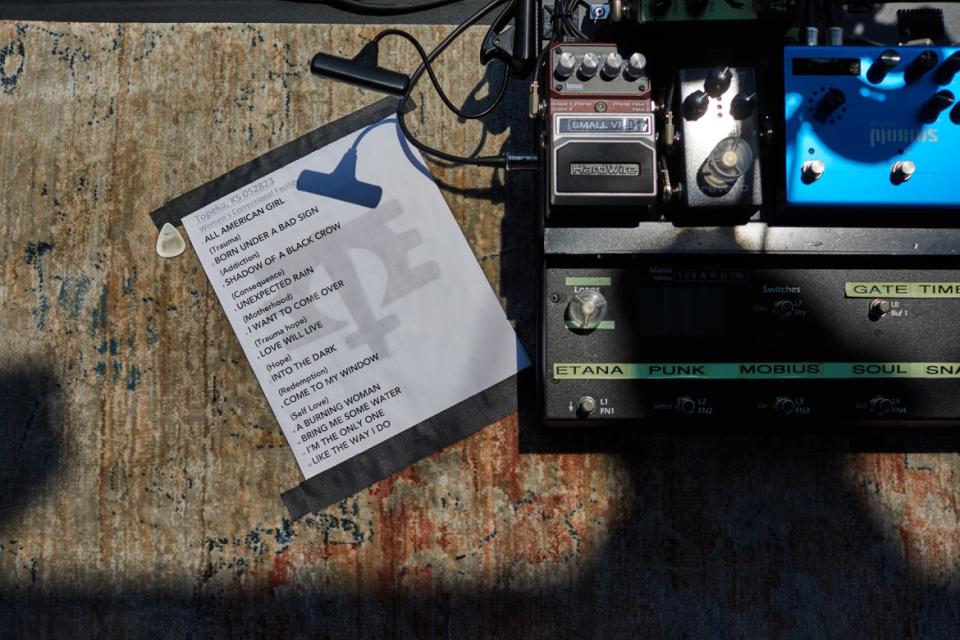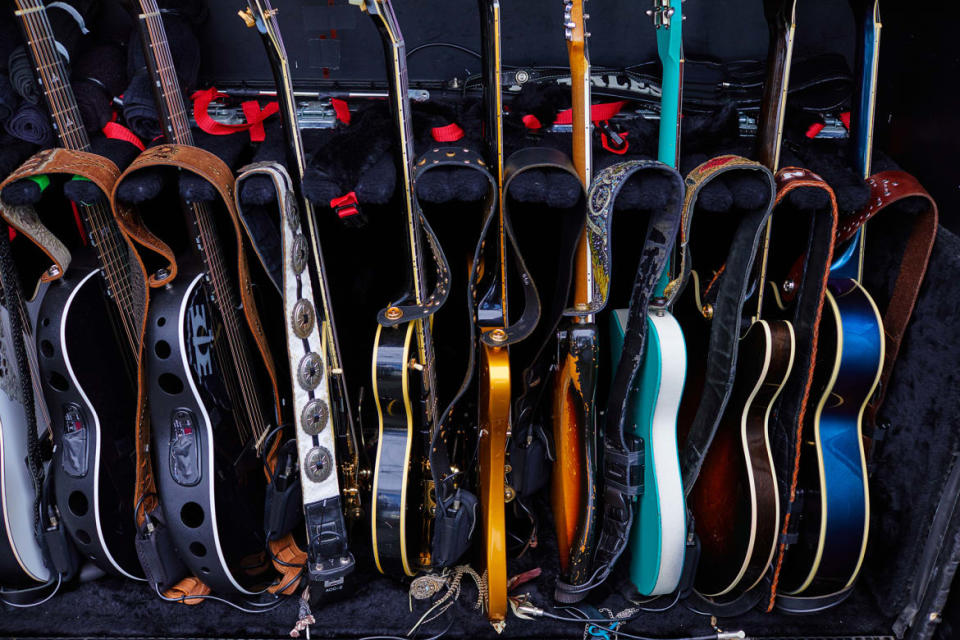Melissa Etheridge Performed the Most Important Concert of Her Life at a Prison

When Melissa Etheridge was 9 years old, Johnny Cash came to her hometown and performed at the local prison. During his concert at the Leavenworth Federal Penitentiary in Kansas, Cash performed favorites like “A Boy Named Sue,” “The Prison Song,” and “Peace in the Valley” for a crowd of 1,200 inmates, quipping, “This is the same show we did for President Nixon, but we’re going to try a little harder here.”
“They got to see him, but we didn’t,” Etheridge tells The Daily Beast’s Obsessed, laughing. “I thought, hey, maybe performing at prisons is a great entertainment gig.”
It wouldn’t be long before Etheridge would follow in Cash’s bootsteps.
When she was 12, Etheridge began performing in the “Bob Hammill Variety Show,” which marked the first time she performed in a prison. Decades later, just last year, Etheridge played what she calls one of the most important concerts of her career, a show for the female inmates at the Topeka Correctional Facility, less than an hour from where she grew up. That performance and Etheridge’s months-long correspondence and meetings with the inmates she played for are the subject of the moving new docuseries Melissa Etheridge: I’m Not Broken, which premieres July 9 on Paramount+.
The “I’m the Only One” singer first started talking about staging a concert at a prison in the ’90s, originally planned as a double-bill with her friend, Tammy Wynette. The project sat on the backburner for years, and Wynette passed away in 1998. But in 2014, Etheridge changed management: “I told them, ‘This is really something I want to do.’” Then, tragically, Etheridge’s son, Beckett, died in 2020 at age 21 of causes related to an opioid addiction. That only fueled her desire to do the show.
A majority of the women incarcerated at the Topeka facility where Etheridge played were serving time for charges related to opioid use or distribution. Their stories are interspersed in the series with footage from the concert, as are interviews with Etheridge explaining her personal connection to the crisis because of Beckett’s addiction and death.
“I do realize that it is unusual for a mother who lost a son not to fall apart and lose themselves in the loss,” she says in the film, adding that she hopes that by talking about her experience she can de-stigmatize the crisis and the pain it causes. “It serves no one. You can’t get sick enough to make a sick person well…I’m not here to wear any sort of badge of shame or take anything on other than, ‘Man, I’m walking this path, and I’m doing the best I can.’”
I’m Not Broken refers to somewhat of an opus for Etheridge: It’s also the title of the song she wrote in the voice of the women she met at the prison, a rally cry for empathy, strength, and survival.
Ahead of I’m Not Broken’s premiere, Etheridge spoke with Obsessed about the high emotions of the concert, advocating for opioid addiction awareness and research, her experience speaking publicly about her son’s death, and carving out her legacy.

Melissa Etheridge
I’m really struck by this idea of a 12-year-old performing in a prison. How did you feel when you were doing that so young??
It’s funny, because it wasn’t just me. There were a lot of different performers. We had dancers and singers, and we were all kids. I didn’t think anything of it. I just thought it was a fun thing to do. They would always be in control. The audience would come in and they would be very vocal, but I never felt in danger or anything. It was a really pleasant experience, except for all the bars we had to go through.
That has to have been foundational to who you are as a performer. I imagine it must have created an empathy that stuck with you throughout your career.
Empathy, and also understanding that everybody loves music. Music just bypasses everything.
‘House of the Dragon’: Who Was the Shocking Death in Dance of Dragons?
There’s a version of this project that could have just been a concert documentary of your performance. But in this, the inmates’ experiences are a major element. Why was that important to you to include?
Well, in the years that I was asked if I just wanted to do a concert, many things happened. One, I lost my son and became much more knowledgeable, having first-hand experience with addiction and trauma and what that can lead to. It really felt right: Find the synergy. Find the common ground with all of us. Just humanize this. I thought, maybe this is an opportunity to start a conversation about how we punish people and what we think of crime and punishment.
Through the sharing of the inmates’ experiences and your own experience with Beckett, the film is also a powerful education on the opioid crisis. Was that always a goal of this project?
It was always something that was there. The producers, they were very sweet with me. The very last time they filmed me, they said, “OK, you need to talk about Beckett.” I was like, “All right, I’ll do it." It was a learning experience for me, and it was healing for me. What else was healing was when I was standing on stage during the concert and told the audience about my son. To see almost every woman in the audience hold their hands in the shape of a heart above their heads, having empathy for me. Here they were imprisoned, their freedoms taken away, taken from their children, and yet they were having empathy for me. That almost brought me to my knees at that point. It was really touching,
Through this project and your work with The Melissa Etheridge Foundation, you’ve had to talk a lot about your experience with your son. How have you handled that?
Well, it’s therapeutic. It’s also my attempt to put it out there and then put it aside. I don’t want to linger on it. I don’t want to bring it up over and over and feel the sadness. But I do believe in how it can help not only me, but others. So this was a way to do it without just “talking” about it.

A still from Melissa Etheridge: I'm Not Broken.
I’m struck by what you just said, that you hope talking about it could help people. Watching the series, I got a sense of your optimism for change that I think, especially in today’s world, is really remarkable. How do you arrive at a place of that optimism?
Well, you live long enough, for one. You live and you see change. I have seen change. I remember when I was talking about gay marriage, and people not even knowing what I was talking about 20 years ago. I’ve seen that change. So I do believe that change is possible, and I do believe in the goodness of humanity. I really do think that most people want what’s good for them and their families. We just disagree with each other about what that “good” is, and one size does not fit all. I think we’re heading towards a place of understanding that we’re all going to be different, and that's never going to change. We cannot all end on the same page, and we shouldn’t want that. Variety is what makes life so interesting.
Your music has often been a rally cry for change, and this project is certainly one that could inspire change. What is the role of art in this pursuit of changing people’s hearts and minds?
Oh, I think art is the thing that makes this all powerful. The beauty and art goes past your brain into your heart and your soul. That’s where I’m so grateful that I can do that. I can sing. I can create the sound and idea around a person that can do all that. If this film can make someone feel hope, then, oh, boy, I've succeeded,
I can’t imagine, after meeting these women, what kind of pressure there was in writing a song for them.
In the film, I say, “I’ve just got to do this and this and this and this... and then I’ve just got to write it, right?” Your intentions are all there, and you just hope that you can, once again, do that magic of pulling it out of the sky. And it was exhilarating, putting my mind in the state of thinking about those women... How can I write a song using their voice? How can it be universal and specific to them? I think I’ve done it. I hope I’ve done it.
I was struck that, for many of these women, it was the first or maybe only their second concert ever. Were you aware of that beforehand?
It became clear that a lot of people had come from homes where they have never had the opportunity to see a concert. That’s why it was really important for me to give them a whole concert experience. We brought in lights, sound, the stage—it was huge. That made me really, really happy.

A still from Melissa Etheridge: I'm Not Broken.
Have you been in touch with any of the inmates that are featured in the film?
I’m gonna see them in a couple weeks. I’m playing in Kansas City, and I’m gonna go visit them. I want to know how they’re doing. I really want to keep in touch.
Between this project and your recent Broadway production that chronicled your life, it seems like you’re at a point in your life where you’re thinking about your legacy. Is that accurate?
We have limited opportunity to really shape what we leave behind. You do your best, and then at some point, it’s just a story that goes on and is told. I wanted to, in my art, create something really clear about how I feel like my life was, and is. I still feel like I’m only halfway there. I think I’ve got about half more of my life to go, and I feel good about that. And when it comes to a legacy, you hit your sixties and you’re like, “OK. I've had an interesting life.” So I thought I could make some art out of it.
The Reality of Reality TV School: Big Dreams and Bigger Fees
If you were given an opportunity to address a group of strangers and impress upon them one message about the opioid crisis, this horrible situation that we’re in in this country because of it, what would you want to say?
Well, I want to really make it clear that the guilt and shame that a family has, that parents have, and the person in particular, the addict, has—the guilt and shame they feel is overwhelming. It is really hard to get around. If we can approach and support these people with taking some of the stigma off… If we can put more information out there about how more people are going through this than you know, or that this is considered a disability, opioid use disorder... There are ways we can look at this other than assuming someone’s a deadbeat and they’re addicted, which is not the way at all. There’s more people than you know going through this. And there’s more hope than you know, too.
Get the Daily Beast's biggest scoops and scandals delivered right to your inbox. Sign up now.
Stay informed and gain unlimited access to the Daily Beast's unmatched reporting. Subscribe now.


